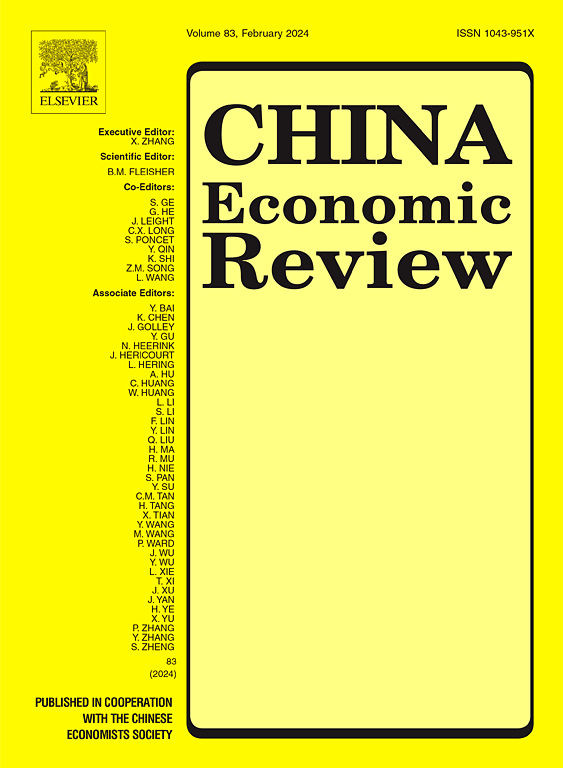Carbon regulatory risk exposure in the bond market: A quasi-natural experiment in China
IF 5.2
1区 经济学
Q1 ECONOMICS
引用次数: 0
Abstract
This study aims to examine the causal effect of carbon regulatory risk on corporate bond yield spreads in emerging markets through empirical analysis. Exploiting China's commitment to peak CO2 emissions before 2030 and achieve carbon neutrality before 2060 as an exogenous shock to an unexpected increase in carbon regulatory risk, we perform a difference-in-difference-in-differences (DDD) strategy. We find that exposure to carbon regulatory risk leads to an increase in bond yield spreads for carbon-intensive firms located in regions with stricter regulatory enforcement. This positive relationship is more pronounced for firms with financing constraints, belonging to more competitive industries, and located in regions with a high marketization process. We further identify that higher earnings uncertainty and increased investor attention serve as two mechanisms by which carbon regulatory risk influences the yield spreads of corporate bonds. Moreover, the spread decomposition reveals that the rise in bond yield spreads after an increase in carbon regulatory risk is primarily driven by the rise in default risk rather than the rise in liquidity risk. Overall, our findings highlight the importance of considering carbon regulatory risk exposure in financial markets, especially in developing economies like China.
债券市场的碳监管风险敞口:中国的准自然实验
本研究旨在通过实证分析,检验碳监管风险对新兴市场公司债券收益率息差的因果关系。利用中国在2030年前实现二氧化碳排放峰值、在2060年前实现碳中和的承诺,作为碳监管风险意外增加的外源冲击,我们实施了“差中差”(DDD)策略。我们发现,碳监管风险敞口导致位于监管执行更严格地区的碳密集型企业的债券收益率息差增加。这种正相关关系在融资受限、行业竞争力较强、位于市场化进程较高地区的企业中更为明显。我们进一步发现,更高的收益不确定性和投资者关注度的增加是碳监管风险影响公司债券收益率息差的两个机制。此外,价差分解表明,碳监管风险增加后债券收益率价差的上升主要是由违约风险上升而非流动性风险上升驱动的。总体而言,我们的研究结果强调了考虑金融市场碳监管风险敞口的重要性,特别是在中国等发展中经济体。
本文章由计算机程序翻译,如有差异,请以英文原文为准。
求助全文
约1分钟内获得全文
求助全文
来源期刊

中国经济评论
ECONOMICS-
CiteScore
10.60
自引率
4.40%
发文量
380
期刊介绍:
The China Economic Review publishes original works of scholarship which add to the knowledge of the economy of China and to economies as a discipline. We seek, in particular, papers dealing with policy, performance and institutional change. Empirical papers normally use a formal model, a data set, and standard statistical techniques. Submissions are subjected to double-blind peer review.
 求助内容:
求助内容: 应助结果提醒方式:
应助结果提醒方式:


